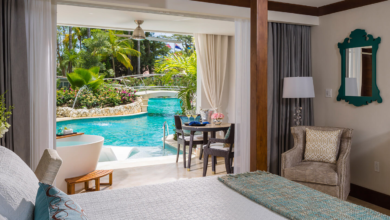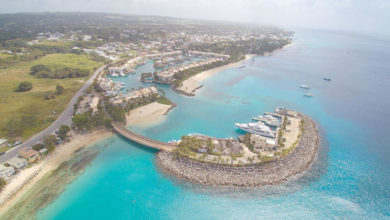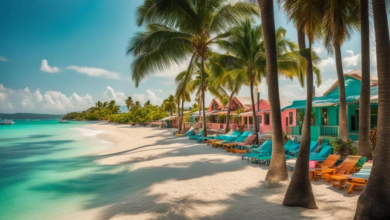Exploring Denmark: Travel, Tourism, and Transportation Between Danish Cities

Introduction:
Denmark, a Scandinavian country known for its picturesque landscapes, rich history, and friendly locals, offers a delightful experience for travelers. From the vibrant capital city of Copenhagen to the charming towns scattered across the countryside, Denmark provides a perfect blend of cultural treasures and natural beauty. This article delves into tourism in Denmark, highlighting key attractions, transportation options, and communication between Danish cities.
- Tourism in Denmark:
Denmark boasts a plethora of attractions that cater to diverse interests. Copenhagen, the capital city, is a bustling metropolis with iconic landmarks like the historic Nyhavn harbor, the mesmerizing Tivoli Gardens amusement park, and the majestic Christiansborg Palace. Visitors can also explore the famous Little Mermaid statue, inspired by Hans Christian Andersen’s fairy tale, or immerse themselves in history at the National Museum of Denmark. - Charming Danish Towns:
Beyond Copenhagen, Denmark is dotted with enchanting towns that showcase the country’s unique character. Aarhus, Denmark’s second-largest city, is renowned for its vibrant arts and culture scene, including the ARoS Aarhus Art Museum and the picturesque old town of Den Gamle By. Odense, the birthplace of Hans Christian Andersen, offers a glimpse into the life of the beloved fairy tale author through museums and exhibitions. Other noteworthy towns include Roskilde, known for its stunning cathedral and Viking Ship Museum, and Ribe, the country’s oldest town with its well-preserved medieval architecture. - Transportation Options:
Denmark provides efficient and convenient transportation options for traveling between cities. The country has a well-connected network of trains, buses, and ferries, making it easy to explore different regions. The national rail service, DSB, offers comfortable and reliable train connections, allowing travelers to navigate the country with ease. Buses, operated by companies like Movia and FlixBus, provide an alternative option for reaching smaller towns and rural areas. Additionally, ferries connect various Danish islands, such as the popular route between Copenhagen and Malmö in Sweden. - Copenhagen Airport:
Copenhagen Airport, also known as Kastrup Airport, serves as the primary international gateway to Denmark. Located just a short distance from the city center, it offers numerous flights to destinations worldwide. The airport is well-equipped with modern facilities, including shops, restaurants, and convenient public transportation connections, allowing seamless travel between the airport and the city. - Local Transportation in Danish Cities:
Once in Danish cities, travelers can rely on efficient local transportation systems. Copenhagen, in particular, has an extensive public transportation network, including buses, trains, and the metro. The city’s bike-friendly infrastructure makes cycling a popular and eco-friendly mode of transportation. Aarhus and other major cities also feature reliable bus services and bike-sharing programs, enabling visitors to explore attractions and navigate the urban areas comfortably. - Communication and Connectivity:
Denmark boasts excellent communication and connectivity infrastructure. Mobile network coverage is widespread, ensuring reliable phone and internet access throughout the country. Many hotels, cafes, and public spaces offer free Wi-Fi to keep travelers connected. Additionally, Denmark has a well-developed postal system, allowing visitors to send postcards and letters to friends and family back home.
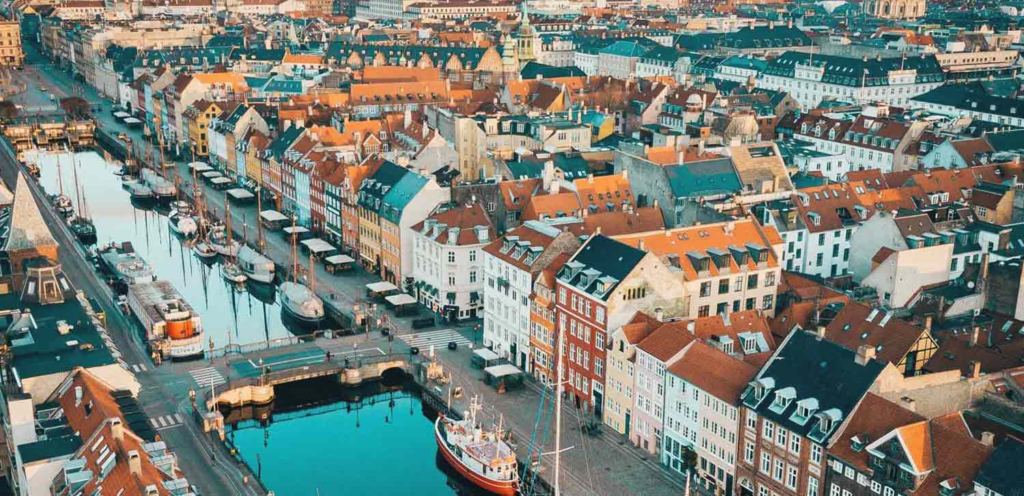
some additional details about travel, tourism, transportation, and communication in Denmark:
- Danish Islands:
Denmark is famous for its beautiful islands, each with its own unique charm. The Danish archipelago includes popular islands such as Zealand, which is home to Copenhagen, and Funen, known for its picturesque landscapes and charming towns like Odense. Other notable islands include Bornholm, located in the Baltic Sea, offering stunning beaches, medieval ruins, and a relaxed atmosphere. The North Sea islands of Rømø and Fanø are known for their wide sandy beaches and opportunities for outdoor activities like windsurfing. - Danish Castles and Palaces:
Denmark is rich in history, and its landscape is dotted with magnificent castles and palaces. Kronborg Castle, located in Helsingør, is a UNESCO World Heritage Site and the setting of Shakespeare’s play “Hamlet.” Frederiksborg Castle, situated in Hillerød, is a stunning Renaissance palace surrounded by beautiful gardens. Amalienborg Palace in Copenhagen serves as the official residence of the Danish royal family and offers a glimpse into their regal lifestyle. Exploring these architectural wonders allows visitors to step back in time and experience Denmark’s royal heritage. - Coastal Scenic Routes:
Denmark’s coastline stretches for over 7,300 kilometers and offers breathtaking scenic routes. The Danish Riviera, located north of Copenhagen, features charming coastal towns, beautiful beaches, and picturesque landscapes. The West Coast of Jutland, known as the “Wadden Sea National Park,” is a UNESCO World Heritage Site and offers unique opportunities for birdwatching, seal spotting, and exploring vast sand dunes. - Danish Gastronomy:
Denmark’s culinary scene has gained international recognition in recent years. The country is renowned for its innovative Nordic cuisine, which focuses on fresh, locally-sourced ingredients and creative presentations. Visitors can indulge in delicious traditional dishes such as smørrebrød (open-faced sandwiches), Danish pastries, and hearty comfort food like frikadeller (Danish meatballs). Exploring local food markets and dining at Michelin-starred restaurants provides a gastronomic adventure for food enthusiasts. - Danish Design and Architecture:
Denmark is celebrated for its minimalist design and innovative architecture. Copenhagen, in particular, showcases iconic modernist buildings like the Royal Danish Playhouse and the Black Diamond, a waterfront extension of the Royal Library. The city also hosts the Design Museum Denmark, dedicated to showcasing Danish design heritage. Exploring the streets of Copenhagen and other Danish cities reveals a blend of historic architecture and contemporary design. - Festivals and Events:
Denmark hosts a vibrant calendar of festivals and events throughout the year. The Roskilde Festival is one of Europe’s largest music festivals, attracting renowned international artists and music enthusiasts from around the world. Aarhus Festuge, held in Aarhus, is a cultural extravaganza featuring music, art, theater, and performances in various venues across the city. Other notable events include the Copenhagen Jazz Festival, the Aalborg Carnival, and the Christmas markets that adorn Danish cities during the holiday season. - Language and Communication:
The official language of Denmark is Danish. While Danish is widely spoken throughout the country, many Danes also speak English fluently, especially in urban areas and tourist destinations. English is commonly used in hotels, restaurants, and tourist information centers, making it convenient for international travelers to communicate and seek assistance. - Currency and Payment:
The official currency of Denmark is the Danish Krone (DKK). Cash is widely accepted, but credit and debit cards are commonly used for payments in most establishments. ATMs are easily accessible in cities and towns for cash withdrawals, and currency exchange services are available at airports, banks, and exchange offices. - Safety and Security:
Denmark is considered one of the safest countries in the world for travelers. Violent crimes and thefts are relatively rare, and the country has a well-functioning healthcare system. However, it is always advisable to take standard precautions, such as keeping an eye on personal belongings, especially in crowded tourist areas, and being aware of any local advisories or guidelines.
These are some additional details about travel, tourism, transportation, and communication in Denmark. The country’s rich history, stunning landscapes, cultural offerings, and warm hospitality make it an ideal destination for exploration and discovery.

some more details about travel, tourism, transportation, and communication in Denmark:
- Outdoor Activities:
Denmark’s natural beauty offers plenty of opportunities for outdoor enthusiasts. The country is known for its well-maintained cycling routes, making it a paradise for cyclists. Visitors can rent bicycles in major cities or join guided cycling tours to explore the countryside, coastal paths, and picturesque landscapes. Denmark also offers hiking trails, nature reserves, and national parks where visitors can enjoy activities such as birdwatching, kayaking, and fishing. - Museums and Cultural Institutions:
Denmark is home to numerous museums and cultural institutions that showcase its rich history, art, and cultural heritage. The National Museum of Denmark in Copenhagen exhibits artifacts from Danish history, including Viking treasures and medieval artifacts. The Louisiana Museum of Modern Art, located north of Copenhagen, is renowned for its contemporary art collections and stunning seaside setting. Other notable museums include the ARoS Aarhus Art Museum, the National Gallery of Denmark, and the Moesgaard Museum. - Sustainability and Green Initiatives:
Denmark is at the forefront of sustainable practices and green initiatives. The country is known for its commitment to renewable energy sources and environmentally friendly policies. Visitors can witness sustainable architecture, such as the energy-efficient buildings in the sustainable neighborhood of Ørestad in Copenhagen. Denmark’s dedication to sustainable transportation is evident with its extensive bicycle infrastructure and investment in public transportation systems. - Seasonal Highlights:
Denmark offers unique seasonal experiences throughout the year. In spring, visitors can witness the stunning cherry blossoms in Copenhagen’s parks and gardens. Summer brings long daylight hours, perfect for exploring outdoor attractions, enjoying festivals, and relaxing on the country’s beautiful beaches. Autumn showcases the vibrant colors of foliage, particularly in forests and rural areas. Winter brings a magical atmosphere, with Christmas markets, ice-skating rinks, and the opportunity to experience hygge, the Danish concept of coziness and contentment during the colder months. - Traveling to Nearby Countries:
Denmark’s central location in Northern Europe makes it an excellent starting point for exploring neighboring countries. Travelers can easily reach Sweden by crossing the Oresund Bridge, connecting Copenhagen and Malmö. Ferries also provide transportation options to Germany, with connections from northern Denmark to cities like Hamburg and Lübeck. These convenient transport links allow visitors to embark on multi-country itineraries and discover the diverse attractions of the region. - Tourist Information Centers:
Tourist information centers are scattered throughout Denmark, particularly in major cities and popular tourist destinations. These centers provide valuable resources, including maps, brochures, and guidance on attractions, events, transportation, and accommodations. Knowledgeable staff members are available to answer questions, provide recommendations, and assist with travel planning, ensuring a smooth and enjoyable experience for visitors.
Remember to check the latest travel advisories, entry requirements, and COVID-19 guidelines before planning your trip to Denmark. Stay informed about any travel restrictions, safety measures, and local regulations to ensure a safe and well-prepared journey.
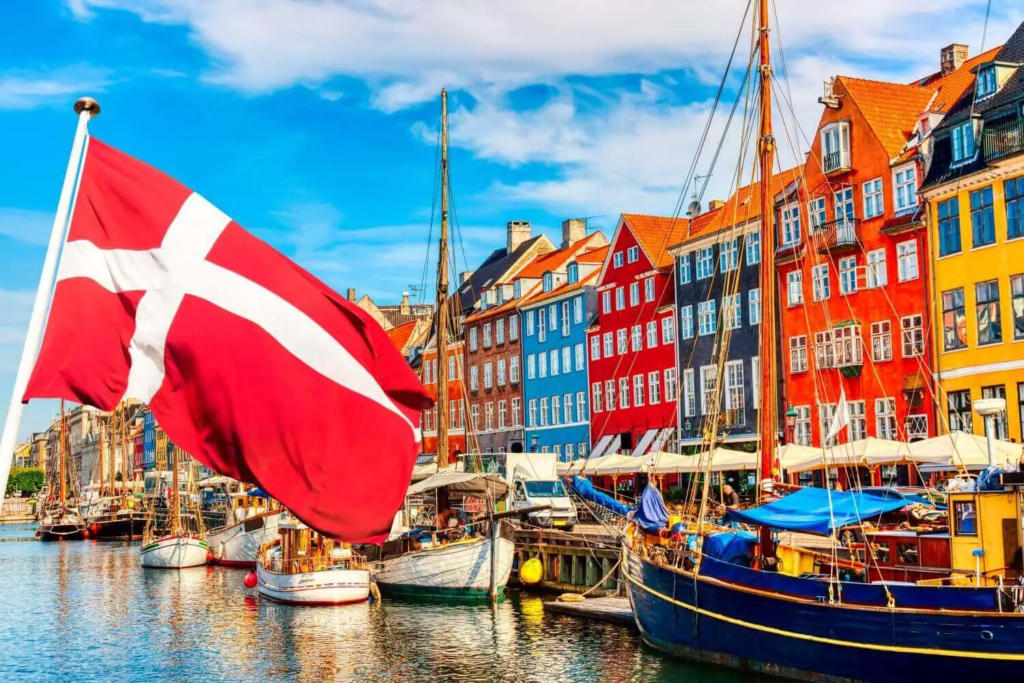
some additional details about travel, tourism, transportation, and communication in Denmark:
- Danish National Parks:
Denmark is home to several national parks that showcase the country’s diverse ecosystems and natural beauty. Thy National Park, located in northwestern Jutland, boasts vast sand dunes, heathlands, and pristine beaches. Mols Bjerge National Park, situated on the eastern coast of Jutland, features rolling hills, forests, and stunning coastal landscapes. Wadden Sea National Park, a UNESCO World Heritage Site, stretches along the west coast and offers a unique habitat for migratory birds, seals, and marine life. - Danish Beaches:
Denmark is famous for its pristine beaches, which attract visitors during the summer months. The country’s coastline offers a wide variety of sandy stretches, from family-friendly beaches with shallow waters to secluded coves and dunes. Popular beach destinations include Skagen in North Jutland, known for its picturesque landscapes, and the beaches of Bornholm, where visitors can enjoy both sandy shores and rugged cliffs. Many beaches in Denmark are equipped with facilities such as lifeguard services, beachside amenities, and water sports activities. - Danish Cuisine and New Nordic Cuisine:
Denmark’s culinary scene goes beyond traditional dishes and incorporates the principles of New Nordic Cuisine. This culinary movement focuses on using locally sourced, seasonal ingredients and combining traditional flavors with innovative techniques. Renowned Danish restaurants, such as Noma in Copenhagen (often regarded as one of the best restaurants in the world), offer gastronomic journeys with their creative and meticulously prepared tasting menus. Exploring local food markets, street food stalls, and traditional Danish eateries called “smørrebrød” or “kro” allows visitors to savor the diverse flavors of Danish cuisine. - Danish Festivals and Celebrations:
Denmark hosts a wide range of festivals and celebrations that showcase its cultural heritage and contemporary creativity. The Aalborg Carnival, held in May, is one of Denmark’s largest street festivals, featuring colorful parades, music, and dance performances. The Copenhagen Jazz Festival, held in July, attracts jazz enthusiasts from around the world with its diverse lineup of concerts and events. Other notable festivals include the Aarhus Festival, the Viking Festival in Ribe, and the Hans Christian Andersen Festival in Odense, which celebrates the life and works of the famous Danish author. - Danish Design Districts:
Denmark has a strong design heritage, and exploring the country’s design districts is a must for design enthusiasts. Copenhagen’s Latin Quarter (Latin Kvarter) is known for its boutique shops, art galleries, and design studios, offering a glimpse into contemporary Danish design. The Frederiksstaden neighborhood in Copenhagen is home to luxury design stores and high-end fashion boutiques. Aarhus, Denmark’s second-largest city, also boasts a vibrant design scene, particularly in the area known as “The Latin Quarter” (Latinerkvarteret), where visitors can discover unique design shops, craft galleries, and innovative design spaces. - Danish Music and Performing Arts:
Denmark has a thriving music and performing arts scene. Apart from the festivals mentioned earlier, the country hosts numerous concerts, theater performances, and cultural events throughout the year. The Royal Danish Theatre in Copenhagen showcases opera, ballet, and theater productions, while the Concert Hall (Koncerthuset) is a renowned venue for classical and contemporary music performances. Aarhus also has a vibrant arts scene, with the Musikhuset Aarhus hosting concerts by both local and international artists. - Danish Royal Residences:
Denmark’s royal family has several residences that reflect the country’s regal history. Amalienborg Palace in Copenhagen serves as the main residence of the Danish royal family and consists of four identical palaces surrounding an octagonal courtyard. The palace complex is open to the public, allowing visitors to explore the royal apartments and learn about the monarchy’s role in Danish society. Other royal residences include Christiansborg Palace, which houses the Danish Parliament, and Fredensborg Palace, a summer residence located north of Copenhagen. - Danish Craftsmanship and Artistic Traditions:
Denmark has a rich tradition of craftsmanship and artistic heritage. Visitors can explore workshops and studios where artisans create traditional crafts such as glassware, ceramics, and textiles. Places like the Royal Copenhagen Porcelain Factory and the Holmegaard Glassworks offer insights into the craftsmanship and techniques involved in creating these exquisite pieces. Denmark is also known for its design-focused museums and galleries that showcase contemporary art, design, and craft. - Danish Christmas Traditions:
Denmark celebrates Christmas with unique traditions and customs. The festive season is marked by Christmas markets, where visitors can shop for handmade crafts, decorations, and traditional Danish treats like æbleskiver (round pancakes) and gløgg (mulled wine). Danes also celebrate Advent, lighting candles on an Advent wreath each Sunday leading up to Christmas. On Christmas Eve, families gather for a festive meal, exchange gifts, and dance around the Christmas tree. Christmas in DenmarkCertainly! Here are some additional details about travel, tourism, transportation, and communication in Denmark:

Here are some more details about Denmark:
- Danish Literature and Hans Christian Andersen:
Denmark has a rich literary tradition, and one of its most famous literary figures is Hans Christian Andersen. He is known for his fairy tales, including “The Little Mermaid,” “The Ugly Duckling,” and “The Emperor’s New Clothes.” Andersen’s works have been translated into numerous languages and continue to be beloved worldwide. In Denmark, you can visit the Hans Christian Andersen Museum in Odense, his birthplace, to learn more about his life and works. - Danish Architecture:
Denmark has a diverse architectural landscape that combines historical landmarks with modern designs. Copenhagen, in particular, showcases a mix of architectural styles. The city is home to historic buildings like Rosenborg Castle and Christiansborg Palace, as well as modern architectural marvels like the Royal Danish Playhouse and the Royal Library, known as the Black Diamond. The district of Ørestad in Copenhagen is renowned for its contemporary architecture, featuring striking buildings such as the VM Houses and the 8 House. - Danish Vikings and History:
Denmark has a fascinating Viking history, and remnants of this era can still be found throughout the country. The National Museum of Denmark in Copenhagen houses an extensive collection of Viking artifacts, including weapons, jewelry, and rune stones. Jelling, located in Jutland, is an important historical site where you can see the Jelling Stones, large runestones erected by Viking kings in the 10th century. The Viking Ship Museum in Roskilde showcases reconstructed Viking ships and offers insights into Viking maritime culture. - Danish Education System:
Denmark has a well-regarded education system known for its emphasis on creativity, critical thinking, and collaboration. The country offers free education, including university education, to its citizens. Danish universities are known for their high academic standards and research opportunities. Institutions like the University of Copenhagen and Aarhus University are recognized internationally for their academic programs, attracting students from around the world. - Danish Environmental Initiatives:
Denmark is committed to sustainability and has implemented various environmental initiatives. The country is a global leader in renewable energy, with a significant focus on wind power. Danish cities prioritize cycling as a means of transportation, with extensive bike lanes and infrastructure. Copenhagen, in particular, has gained recognition as a bike-friendly city. Denmark also aims to become carbon-neutral by 2050 and has implemented measures to reduce greenhouse gas emissions and promote energy efficiency. - Danish Healthcare System:
Denmark has a comprehensive healthcare system that provides universal access to healthcare services for all residents. The system is primarily funded through taxes and ensures that essential medical care is accessible and affordable. Denmark consistently ranks highly in healthcare quality and is known for its efficient healthcare delivery and patient-centered approach. - Danish Fashion and Design:
Denmark has made significant contributions to the world of fashion and design. Danish fashion brands like Ganni, Baum und Pferdgarten, and By Malene Birger have gained international recognition for their contemporary and innovative designs. Danish design also extends to furniture, with iconic pieces from designers such as Arne Jacobsen and Hans Wegner becoming renowned worldwide. Design stores and showrooms in Copenhagen, such as Illums Bolighus and Hay House, offer a wide range of Danish design products. - Danish Maritime Heritage:
As a nation with a rich maritime history, Denmark offers maritime attractions and experiences. The Maritime Museum in Helsingør showcases Denmark’s seafaring heritage and features exhibitions on shipbuilding, navigation, and maritime traditions. The city of Esbjerg is known for its fishing and shipping industries, and visitors can explore the Fisheries and Maritime Museum, which provides insights into Danish fishing traditions and marine life. Denmark’s coastal towns and harbors also offer opportunities for sailing, boat trips, and coastal exploration. - Danish Entrepreneurship and Innovation:
Denmark has a thriving entrepreneurial culture and fosters innovation. The country supports startups through various initiatives, incubators, and accelerators. Copenhagen, in particular, has a vibrant startup ecosystem, with a focus on industries such as cleantech, biotech, and tech. Co-working spaces, networking events, and entrepreneurial communities provide opportunities for collaboration and growth. - Danish Hygge:
Hygge is a Danish concept that embodies coziness, contentment, and a sense of well-being. It is a cultural phenomenon that emphasizes creating a warm and inviting atmosphere, often through simple pleasures like spending time with loved ones, enjoying comfort food, or cozying up with a good book. Embracing hygge is a way of finding joy in life’s small moments and cultivating a sense of comfort and happiness.

Here are some additional details about various topics:
- Danish Cuisine:
Danish cuisine is known for its simplicity and emphasis on fresh, high-quality ingredients. Traditional Danish dishes include smørrebrød, which are open-faced sandwiches typically topped with ingredients like herring, roast beef, or smoked salmon. Another popular dish is frikadeller, Danish meatballs usually made from a mixture of ground pork and beef. Danish pastries, such as the iconic wienerbrød (Danish pastry) and kanelsnegle (cinnamon rolls), are famous worldwide for their delicious flaky layers. - Danish Festivals and Celebrations:
Denmark has a rich calendar of festivals and celebrations that reflect its cultural heritage and traditions. One of the most significant events is Christmas, where Danish people celebrate with family gatherings, festive meals, and the lighting of candles on the Advent wreath. Another notable celebration is Midsummer’s Eve (Sankt Hans Aften) on June 23rd, marked by bonfires, singing, and the burning of witches to ward off evil spirits. Copenhagen also hosts the annual Copenhagen Jazz Festival, attracting jazz enthusiasts from around the world. - Danish Royal Family:
The Danish Royal Family, known as the House of Glücksburg, has a long history and plays a ceremonial role in Danish society. Queen Margrethe II has been the reigning monarch since 1972, following the death of her father, King Frederick IX. The royal family is well-regarded and respected by the Danish population, and they participate in various official events and engagements. The Crown Prince Frederik and Crown Princess Mary, as well as their children, are popular figures in Denmark. - Danish Film and Television:
Denmark has a vibrant film and television industry known for its quality productions. Danish films, such as “Babette’s Feast,” “The Hunt,” and “A Royal Affair,” have received international acclaim and won numerous awards. Danish television series have also gained popularity worldwide, with notable examples including “The Killing,” “Borgen,” and “The Bridge.” The success of Danish productions has contributed to the country’s reputation for compelling storytelling and innovative filmmaking. - Danish Music:
Denmark has a diverse music scene that encompasses various genres and styles. Danish musicians and bands have achieved international success in different musical genres, including pop, rock, electronic, and classical music. Artists like MØ, Lukas Graham, Medina, and Volbeat have gained popularity globally. Copenhagen Jazz Festival, mentioned earlier, is one of the largest jazz festivals in Europe and attracts renowned jazz musicians. - Danish National Parks and Nature:
Denmark boasts several national parks and natural areas that offer opportunities for outdoor activities and exploration. National parks like Thy National Park, Mols Bjerge National Park, and Wadden Sea National Park showcase the country’s diverse landscapes, including sand dunes, heathlands, and coastal wetlands. These areas provide habitats for various plant and animal species and are ideal for hiking, cycling, birdwatching, and nature photography. - Danish Folklore and Mythology:
Denmark has a rich folklore tradition with mythical creatures, legends, and folk tales. One famous character is the mischievous and magical creature called a nisse or tomte, often depicted as a small bearded man wearing a red hat. Danish folklore also includes tales of trolls, giants, and mythical creatures like the water spirit known as the havmand. These stories are often passed down through generations and contribute to Denmark’s cultural heritage. - Danish Sports:
Denmark has a strong sporting culture, and several sports enjoy widespread popularity. Football (soccer) is the most popular sport in Denmark, with the national team achieving success on the international stage. Handball is another popular sport, and the Danish national handball team has won multiple Olympic medals and World Championships. Cycling is deeply ingrained in Danish culture, with many people using bicycles as their primary mode of transportation. - Danish Language:
The official language of Denmark is Danish, a North Germanic language. Danish is also spoken in the Faroe Islands and Greenland, which are part of the Danish Realm. The language has its roots in Old Norse and is closely related to Swedish and Norwegian. Danish uses the Latin alphabet with additional letters such as æ, ø, and å. English proficiency is generally high in Denmark, and many Danes speak English fluently. - Danish Inventions and Innovations:
Denmark has a history of notable inventions and innovations. Some significant contributions include the development of LEGO, the famous toy company known for its interlocking plastic bricks. Danish engineer Ole Kirk Christiansen founded LEGO in 1932. Denmark is also credited with the invention of the loudspeaker by Peter L. Jensen and Edwin P. Bull in the early 20th century. Additionally, Danish scientists and researchers have made advancements in various fields, including renewable energy, pharmaceuticals, and medical technologies.
Conclusion:
Denmark invites travelers to explore its vibrant cities, picturesque towns, and captivating attractions. From the lively streets of Copenhagen to the serene beauty of the Danish countryside, the country offers a diverse range of experiences. With efficient transportation options, including trains, buses, and ferries, navigating between Danish cities is convenient and hassle-free. Whether immersing oneself in history, enjoying the local cuisine, or taking in the stunning landscapes, Denmark promises an unforgettable journey for every traveler.

